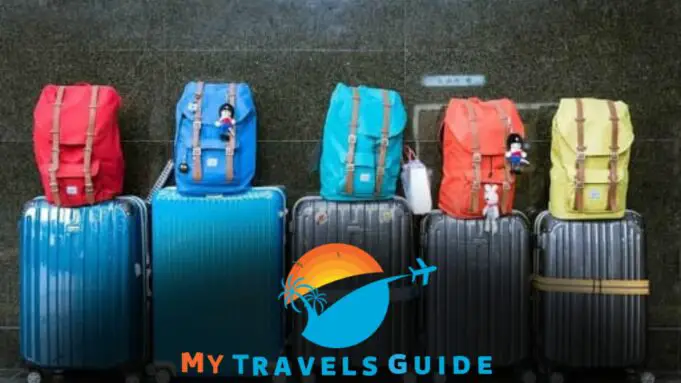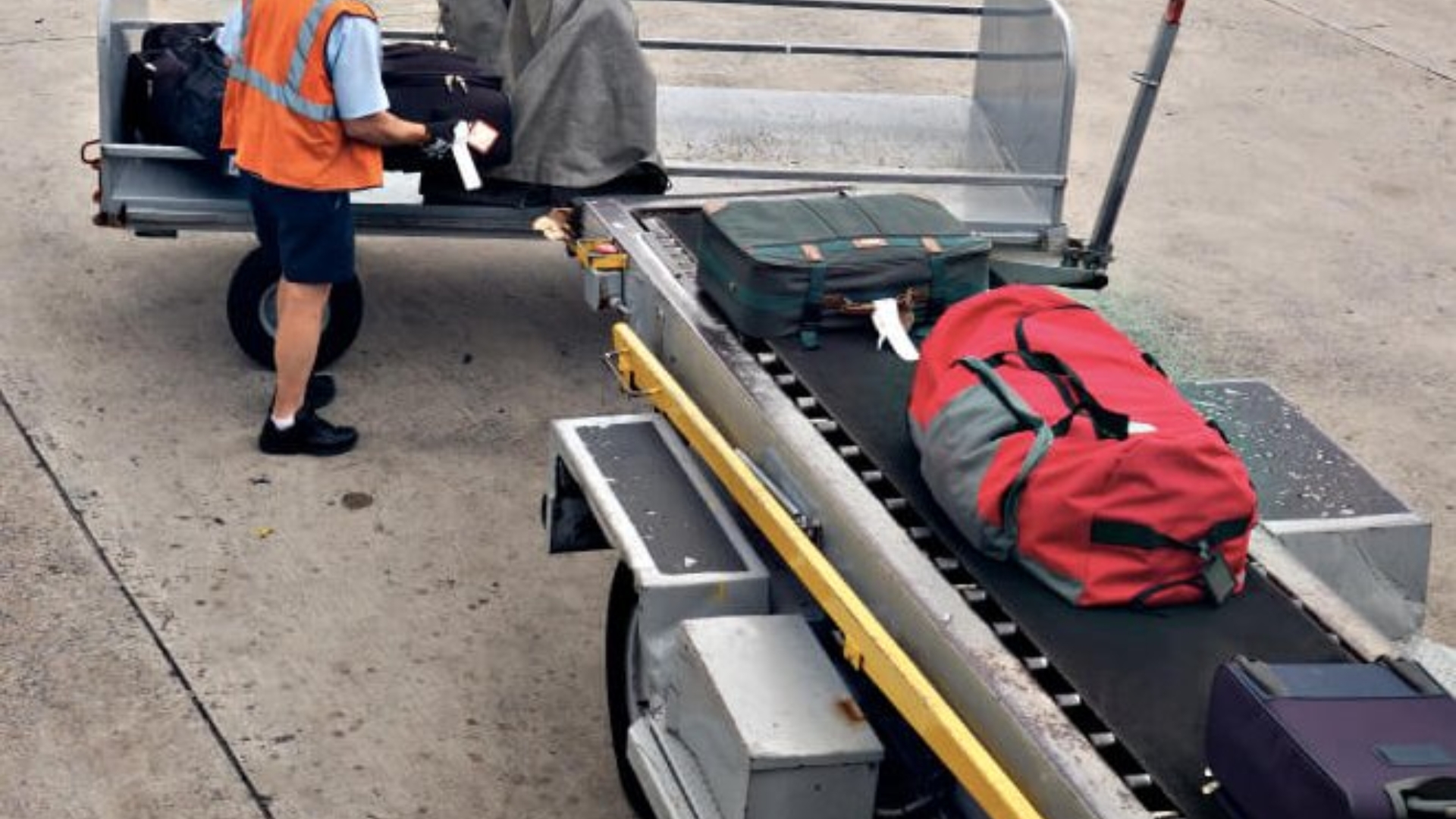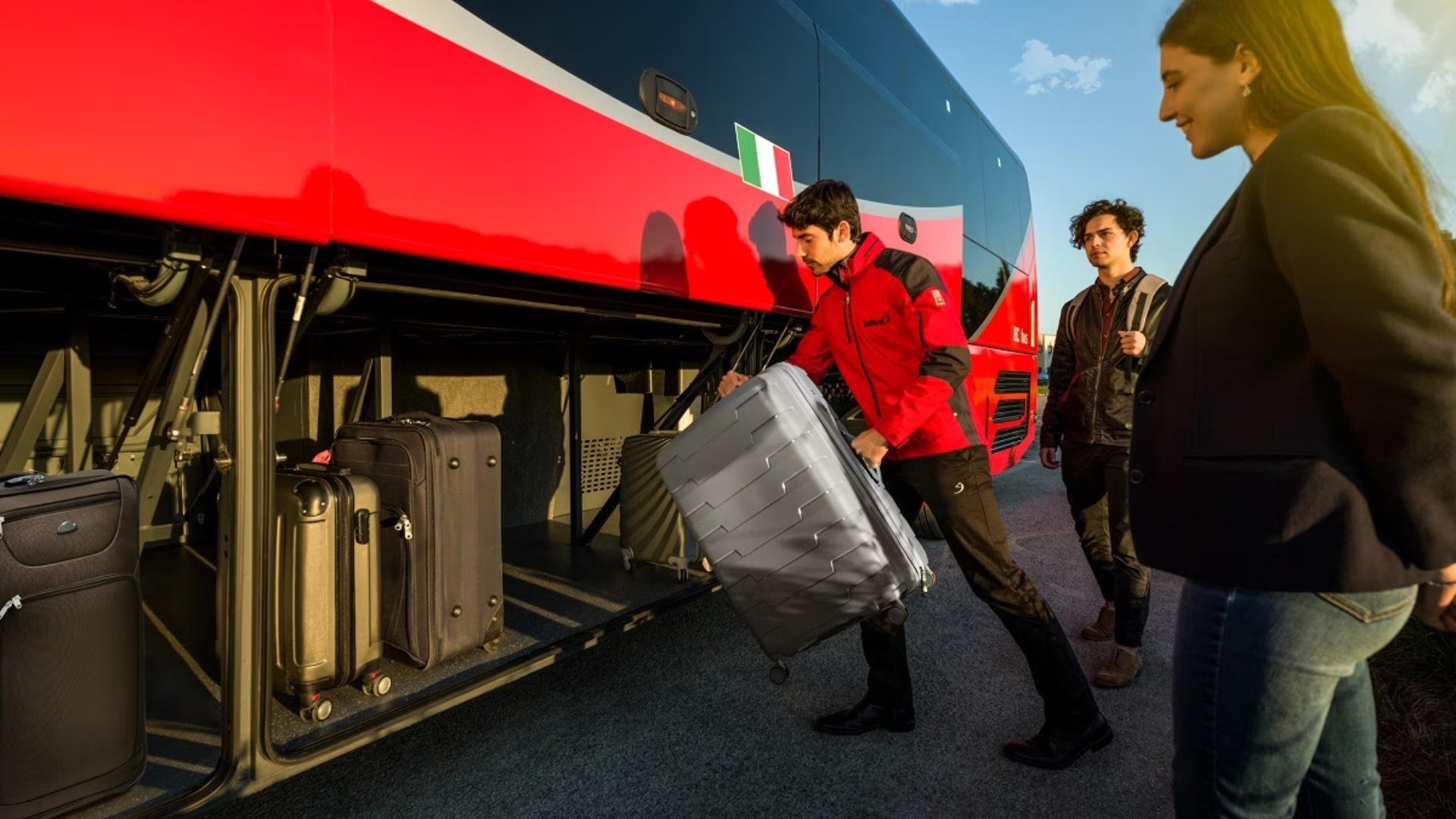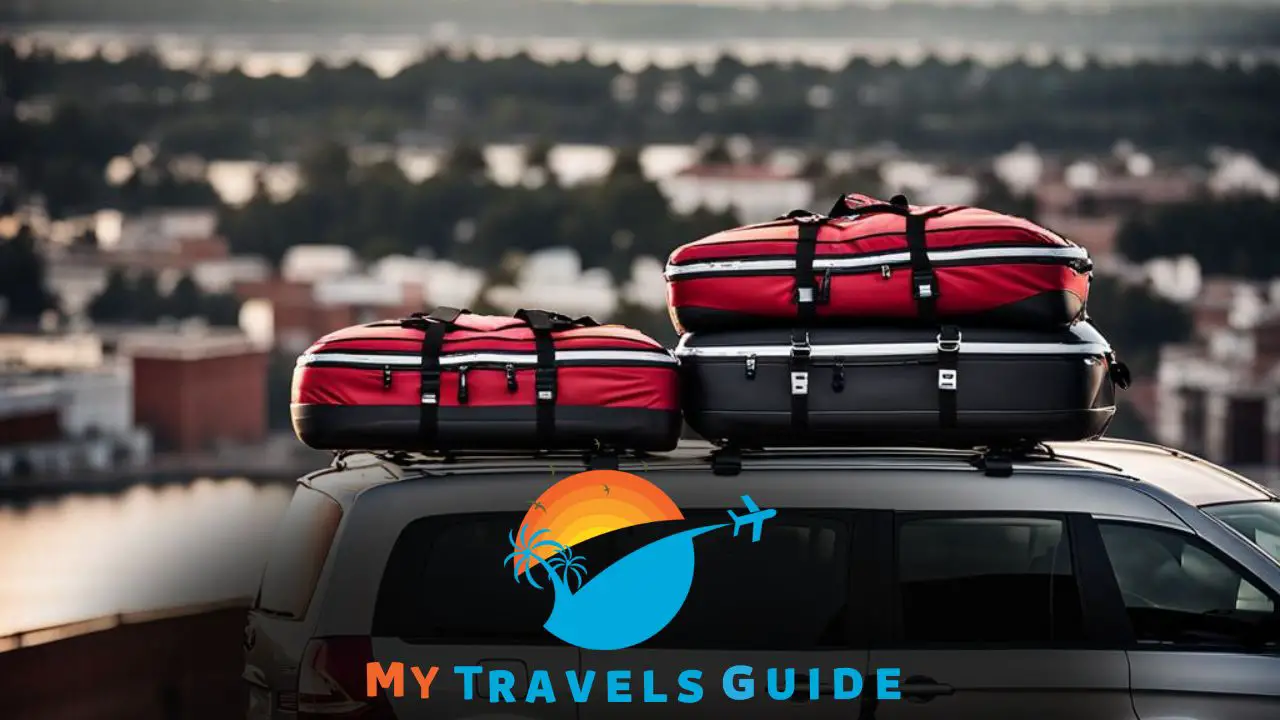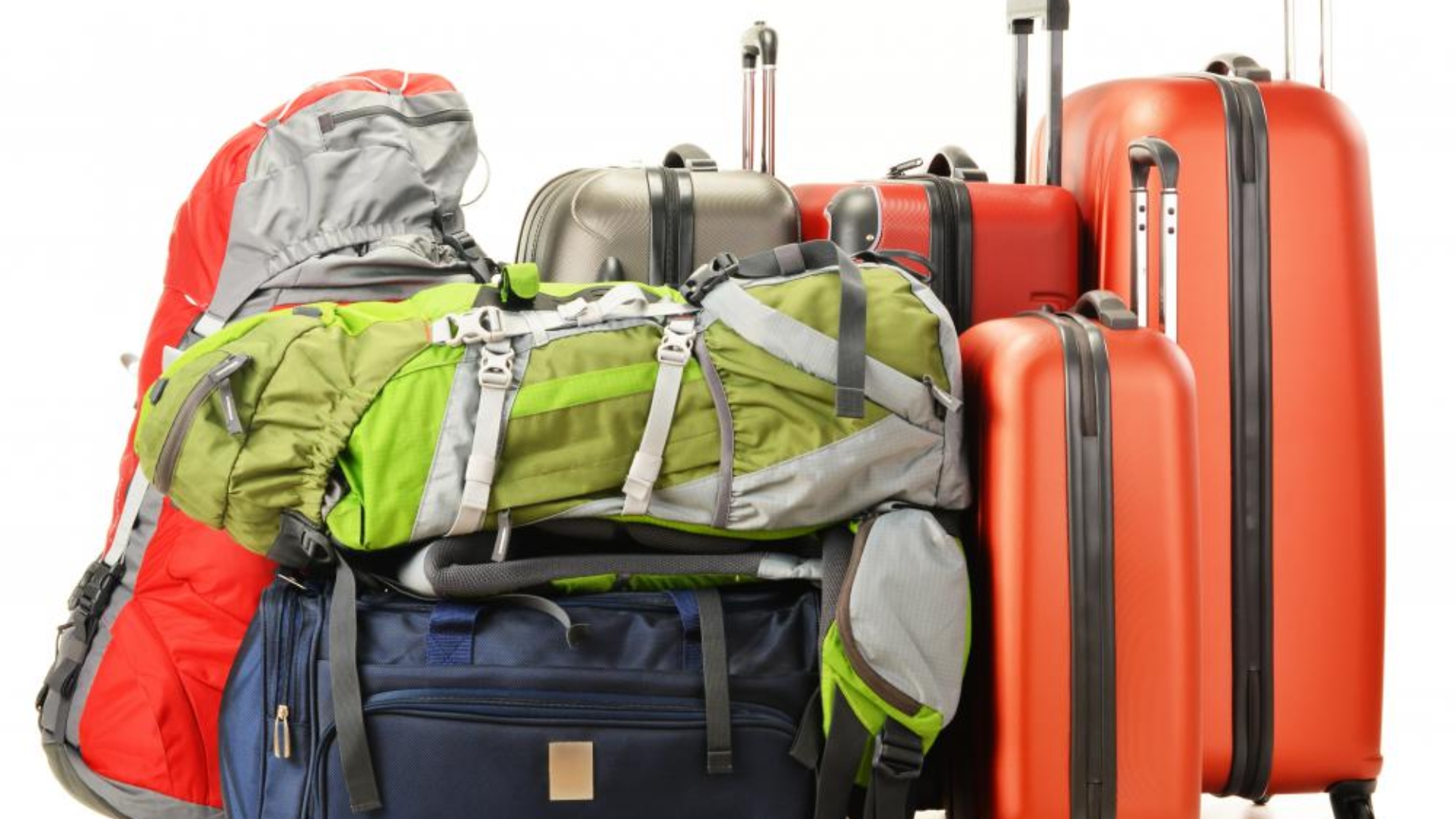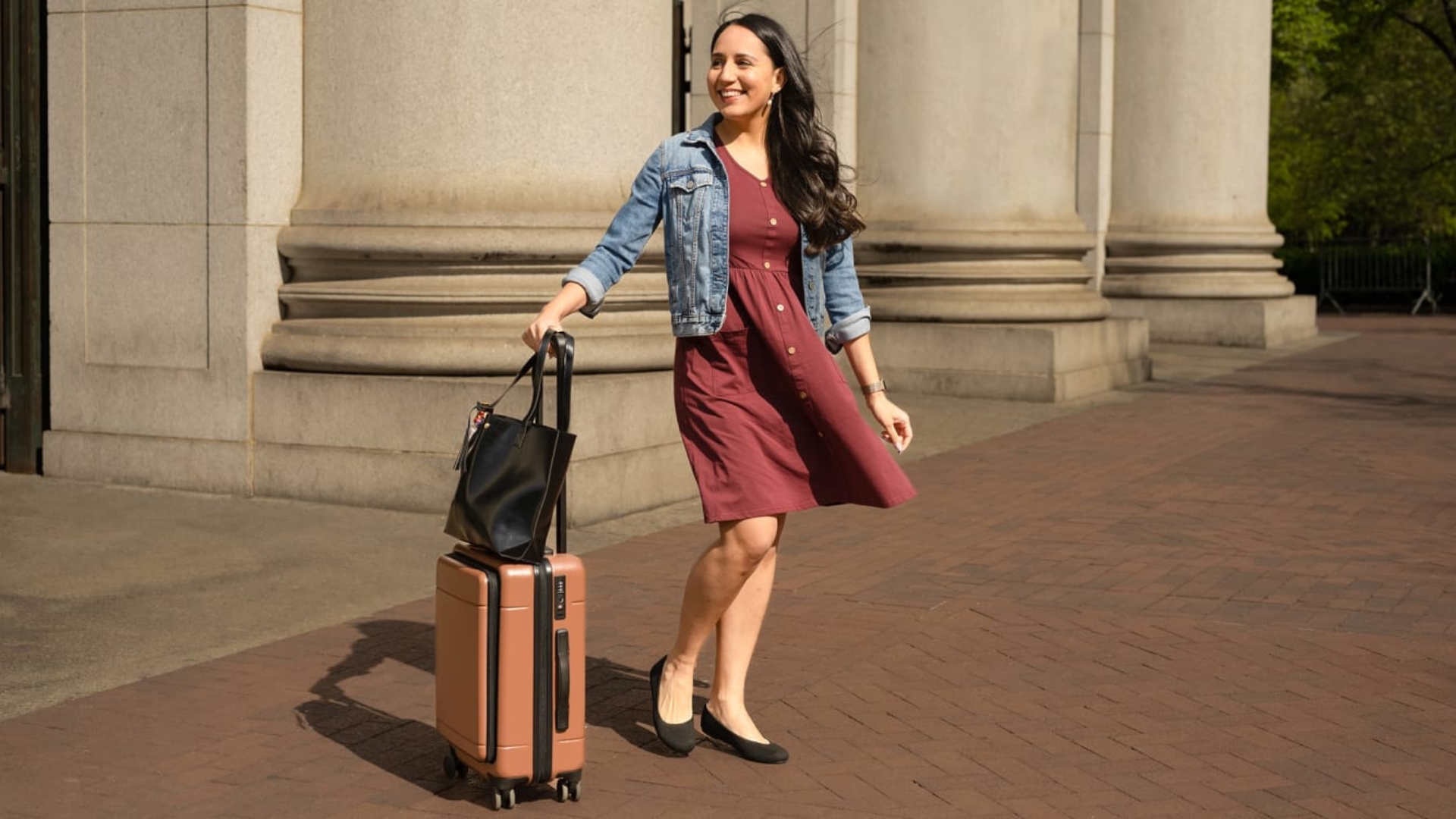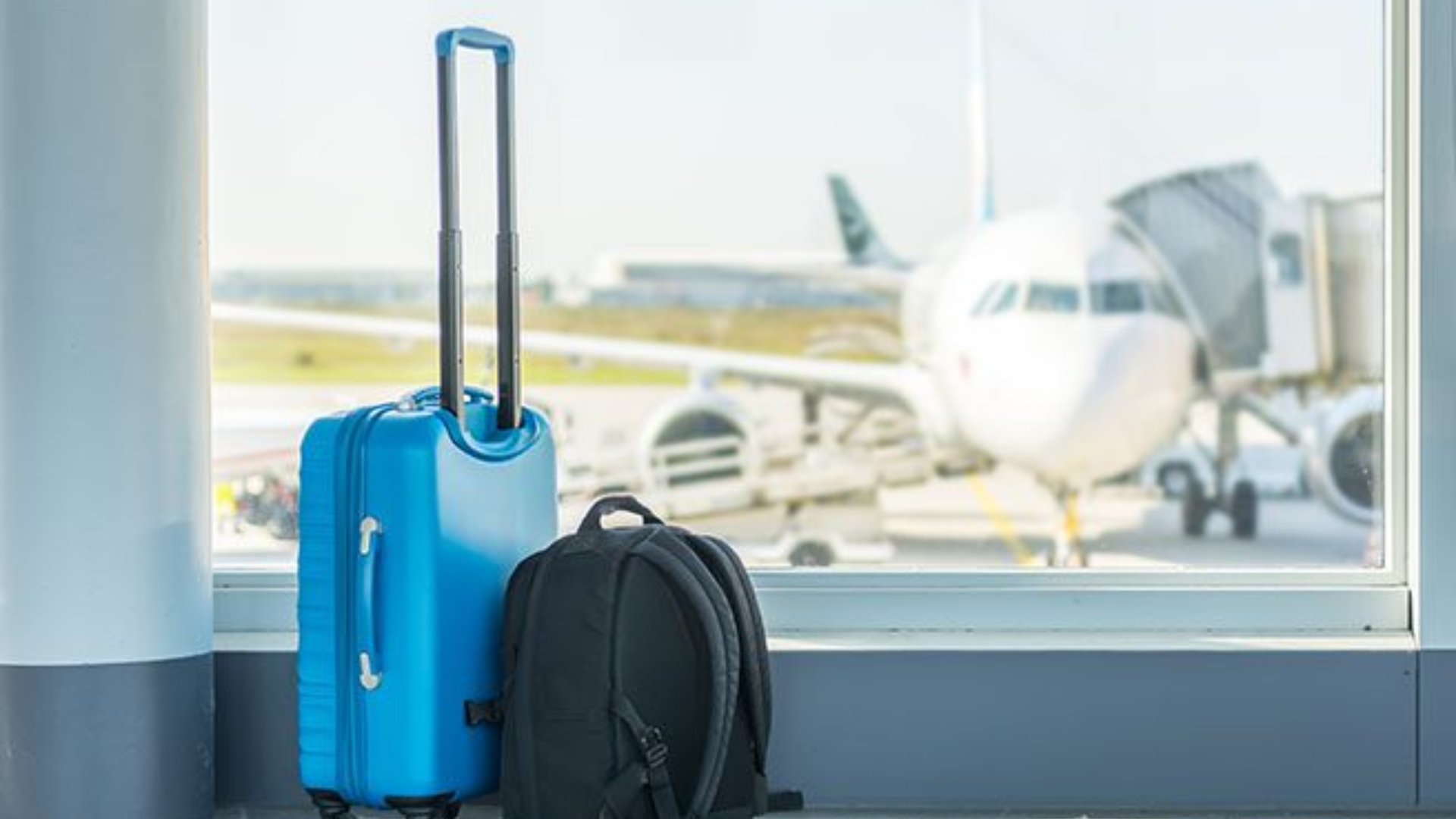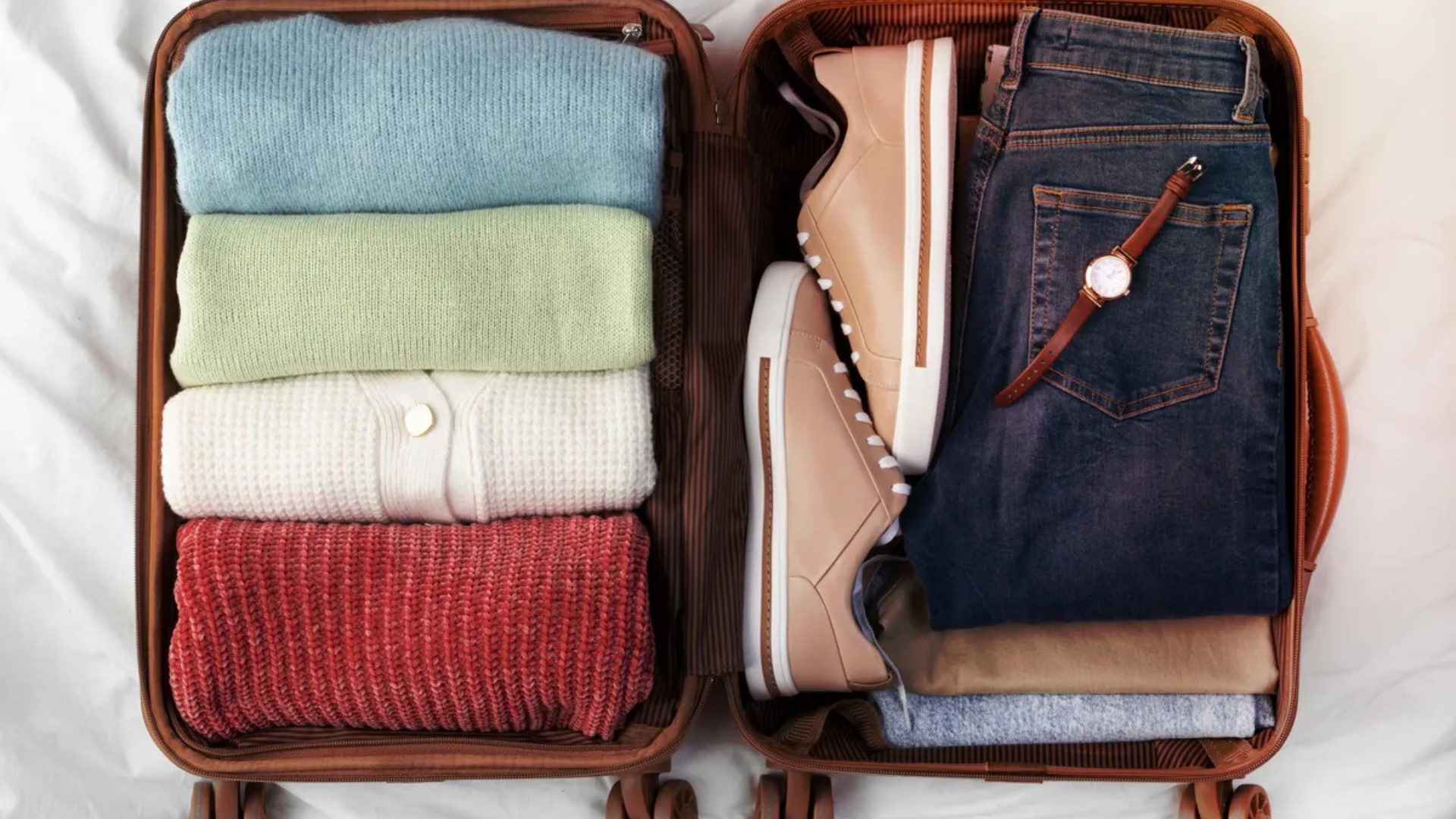In this article:
The specific airline’s baggage policies determine the largest luggage size for check-in and can vary. However, the maximum size is generally around 158 cm (62 inches) in total dimensions (length + width + height).
Depending on the airline, there may also be weight restrictions, typically ranging from 23 kg (50 pounds) to 32 kg (70 pounds).
It’s important to check the airline’s guidelines before traveling to ensure compliance and avoid any additional fees or complications at the airport.
Awareness of the luggage size and weight restrictions can help travelers plan their packing accordingly and have a smooth check-in experience.
Unpacking the Limits: Largest Luggage Size for Check-in Cm
When it comes to air travel, understanding the maximum dimensions allowed for check-in luggage is crucial. Airlines have their own policies and restrictions in place to ensure smooth operations and passenger safety.
In this article, we will dive into luggage dimensions and explore the importance of knowing the largest luggage size for check-in in centimeters (cm) and the consequences of exceeding these limits.
Additionally, we will provide an overview of common airlines’ standard luggage policies.
In our exploration of travel essentials, delve into our comprehensive guide on 62 Linear Inches Luggage in cm to ensure you make an informed choice for your next journey.
Importance of Knowing Maximum Luggage Dimensions
Knowing the maximum dimensions allowed for check-in luggage is paramount for travelers. By being aware of these limits, passengers can avoid any unexpected airport charges, delays, or hassles.
Here’s why understanding the largest luggage size for check-in in cm matters:
- Avoiding additional fees: Most airlines have strict policies when it comes to oversized luggage. If your bag exceeds the permitted measurements, you may be required to pay extra fees or even upgrade to a higher fare class. Knowing the maximum dimensions ensures that your luggage meets the airline’s requirements and avoids unexpected charges.
- Ease of transportation: Oversized luggage can be difficult to handle and transport for travelers and airline staff. By adhering to the maximum dimensions, you can ensure that your bag fits comfortably in the storage compartments and can be easily moved around without causing any inconvenience.
- Time-saving: At the airport, airline staff may need to manually check luggage that exceeds the maximum dimensions or undergo additional security screenings. This can lead to delays not only for you but also for other passengers. Following the guidelines can help maintain a smooth and efficient check-in process for everyone.
Consequences of Oversized Luggage
Exceeding the maximum luggage dimensions can have several consequences, including:
- Additional charges: Airlines typically have strict policies when it comes to oversized luggage. If your bag exceeds the maximum dimensions, you may be required to pay additional fees. These fees can vary depending on the airline and quickly add up, denting your travel budget.
- Bag rejection: In some cases, if your luggage exceeds the maximum dimensions by a significant margin, the airline may refuse to check it in altogether. You must make alternate arrangements for your luggage, such as shipping it separately or using a different bag.
- Potential damage: Oversized luggage is more prone to damage during handling and transportation. If your bag exceeds the allowed dimensions, it may not fit properly in the cargo hold or storage compartments, increasing the risk of mishandling and potential damage to your belongings.
Airlines’ Standard Luggage Policies Overview
To provide you with a quick overview, here are the standard luggage policies of some popular airlines:
1. Qatar Airways
- Carry-on luggage: Passengers are allowed one carry-on bag that must not exceed 23 kg (51 lb) in weight and 55 x 40 x 25 cm (21.7 x 15.7 x 9.8 in) in dimensions.
- Checked luggage: Economy class passengers are allowed one checked bag that must not exceed 30 kg (66 lb) in weight and 75 x 50 x 37 cm (29.5 x 19.7 x 14.6 in) in dimensions. Business class passengers are allowed two checked bags that must not exceed 32 kg (70 lb) in weight and 75 x 50 x 37 cm (29.5 x 19.7 x 14.6 in) in dimensions. First-class passengers are allowed three checked bags that must not exceed 32 kg (70 lb) in weight and 75 x 50 x 37 cm (29.5 x 19.7 x 14.6 in) in dimensions.
2. Singapore Airlines
- Carry-on luggage: Passengers are allowed one carry-on bag that must not exceed 7 kg (15.4 lb) in weight and 115 cm (45.3 in) in linear dimensions.
- Checked luggage: Economy class passengers are allowed one checked bag that must not exceed 23 kg (51 lb) in weight and 158 cm (62.2 in) in linear dimensions. Business class passengers are allowed two checked bags that must not exceed 32 kg (70 lb) in weight and 158 cm (62.2 in) in linear dimensions. First-class passengers are allowed three checked bags that must not exceed 32 kg (70 lb) in weight and 158 cm (62.2 in) in linear dimensions.
3. Emirates
- Carry-on luggage: Passengers are allowed one carry-on bag that must not exceed 7 kg (15.4 lb) in weight and 55 x 40 x 25 cm (21.7 x 15.7 x 9.8 in) in dimensions.
- Checked luggage: Economy class passengers are allowed one checked bag that must not exceed 23 kg (51 lb) in weight and 158 cm (62.2 in) in linear dimensions. Business class passengers are allowed two checked bags that must not exceed 32 kg (70 lb) in weight and 158 cm (62.2 in) in linear dimensions. First-class passengers are allowed three checked bags that must not exceed 32 kg (70 lb) in weight and 158 cm (62.2 in) in linear dimensions.
Please note that these dimensions and weight limits are subject to change, so it is always recommended to check with the specific airline you are traveling with for the most up-to-date information.
Travel with ease and comfort by choosing the Ultra Lightweight Luggage featured in our blog post – your perfect travel companion designed for convenience without compromising on style.
Navigate the Rules: Airline Specifications
When traveling by air, understanding the rules and regulations regarding luggage size is crucial. Each airline has its specific requirements for check-in luggage dimensions, and it’s essential to be aware of these specifications to avoid any hassle at the airport.
In this section, we will explore how airlines differ in check-in luggage size, how to search for airline-specific information and notable exceptions to standard guidelines.
How Airlines Differ in Check-in Luggage Size
Before packing for your next trip, you must know that check-in luggage size restrictions can vary from one airline to another. While most airlines adhere to standard guidelines, slight deviations in the dimensions may be allowed.
Here is a breakdown of some popular airlines and their check-in luggage size limits:
| Airline | Carry-on (Maximum Dimensions (cm)) | Carry-on (Maximum Weight (kg)) | Checked (Maximum Dimensions (cm)) | Checked (Maximum Weight (kg)) |
|---|---|---|---|---|
| Qatar Airways | 55 x 40 x 25 | 23 | 75 x 50 x 37 | 30 |
| Singapore Airlines | 115 | 7 | 158 | 23 |
| Emirates | 55 x 40 x 25 | 7 | 158 | 23 |
| American Airlines | 55 x 40 x 25 | 22 | 158 x 203 x 40.5 | 23 |
| Delta Air Lines | 55 x 40 x 25 | 22 | 158 x 203 x 40.5 | 23 |
| United Airlines | 55 x 40 x 25 | 22 | 158 x 203 x 40.5 | 23 |
| Lufthansa | 55 x 40 x 23 | 8 | 158 x 203 x 40.5 | 23 |
| Turkish Airlines | 55 x 40 x 23 | 8 | 158 x 203 x 40.5 | 23 |
| Air France | 55 x 38 x 20 | 12 | 158 x 203 x 40.5 | 23 |
| British Airways | 56 x 45 x 25 | 23 | 158 x 203 x 40.5 | 23 |
As you can see, even a small variation in dimensions can significantly impact whether your luggage is allowed in the cabin or needs to be checked in.
It’s always recommended to check with the airline you are traveling with to ensure compliance with their rules.
Searching for Airline-specific Luggage Information
Searching for the exact luggage information for a specific airline can sometimes be daunting. However, many airlines provide comprehensive details on their official websites, making it easier for travelers to find the information they need. To simplify your search:
- Visit the official website of the airline you plan to travel with.
- Navigate to the baggage information section.
- Look for the check-in luggage specifications.
By following these steps, you can find the most up-to-date and accurate information regarding luggage size restrictions for your flight.
Notable Exceptions to Standard Guidelines
While most airlines have standard guidelines for check-in luggage size, there are certain exceptions you need to be aware of, which may be applicable in specific cases:
- Some airlines may have different luggage size limits for first-class or business-class passengers.
- Certain routes or destinations may have their specific regulations due to aircraft size or space constraints.
- Special allowances may be made for certain items, such as musical instruments or medical equipment.
It’s crucial to note that these exceptions vary from airline to airline, and it is always recommended to check with the airline directly or refer to their official website to ensure you have the most accurate information.
Uncover the Ultimate Dimensions: Maximizing Check-in Luggage
Uncover the ultimate dimensions for maximizing check-in luggage with our guide on the largest luggage sizes for check-in in centimeters. Discover the perfect size to meet your travel needs and maximize your luggage space.
Dimensions That Fit Most Airlines’ Criteria
The first step to maximizing your check-in luggage is understanding the dimensions that fit most airlines’ criteria.
Each airline may have its own specific requirements, but generally, the largest permissible size for check-in luggage is measured in centimeters (cm). To ensure compliance, checking the guidelines your chosen airline provides before packing your bags is crucial.
Here is a table outlining the maximum dimensions allowed by some popular airlines:
| Airline | Length (cm) | Width (cm) | Height (cm) |
|---|---|---|---|
| Qatar Airways | 55 | 40 | 25 |
| Singapore Airlines | 115 | – | – |
| Emirates | 55 | 40 | 25 |
| American Airlines | 55 | 40 | 25 |
| Delta Air Lines | 55 | 40 | 25 |
| United Airlines | 55 | 40 | 25 |
| Lufthansa | 55 | 40 | 23 |
| Turkish Airlines | 55 | 40 | 23 |
| Air France | 55 | 38 | 20 |
| British Airways | 56 | 45 | 25 |
Remember, these dimensions are subject to change, so it’s always wise to double-check with the specific airline you’ll be flying with.
Balancing Size, Weight, And Practicality
Maximizing check-in luggage goes beyond simply meeting size requirements. It’s important to balance size, weight, and practicality. While you may be tempted to pack as much as possible, airlines also impose weight restrictions.
Finding the perfect balance allows you to utilize the largest permissible dimensions without exceeding weight limits.
Here are a few tips to help you achieve optimal balance:
- Pack lightweight clothing and choose versatile pieces that can be mixed and matched.
- Invest in lightweight luggage to minimize the weight of the bag itself.
- Consider the weight of individual items and prioritize essentials.
- Utilize packing cubes or compression bags to maximize space and compress bulky items.
- Place heavier items at the bottom of the luggage to distribute weight evenly.
Tips for Packing Within the Largest Permissible Size
Now that you’re equipped with the knowledge of the largest permissible size, here are some tips to help you pack efficiently within those dimensions:
- Roll your clothes instead of folding them to save space and minimize wrinkles.
- Use every nook and cranny of your luggage by tucking smaller items into shoes or filling gaps with socks and underwear.
- Invest in travel-sized toiletry containers to comply with liquid restrictions and save space.
- Avoid overpacking. Ask yourself if you need every item you plan to bring.
- Consider wearing bulky items like jackets or boots during your journey.
By following these tips, you can make the most of the largest permissible size for check-in luggage, ensuring you have everything you need while staying within the airline’s guidelines. Happy travels!
Choosing Your Colossus: Best Luggage Options
When traveling, having the right luggage can make all the difference. For those who prefer to check in their baggage, finding the largest luggage size for check-in is essential.
After all, you want to ensure you have enough space to pack all your essentials without worrying about exceeding airline regulations.
Types of Luggage That Maximize Allowable Dimensions
When selecting a check-in suitcase, choosing the right type that maximizes the allowable dimensions is important. Here are a few types of luggage that are known for providing ample space:
- Hardshell Suitcases: Hardshell suitcases are known for their durability and spacious interiors. They offer rigidity and protection for your belongings, ensuring your items stay intact throughout your journey. Look for models with expandable features that allow you to increase the overall dimensions when needed.
- Spinner Suitcases: Spinner suitcases have four wheels that rotate 360 degrees, making them incredibly easy to maneuver. These suitcases come in various sizes, including larger options that meet the requirements for check-in luggage. Look for spinner suitcases with lightweight yet sturdy materials to avoid exceeding weight restrictions.
- Wheeled Duffel Bags: If you prefer a more flexible option, wheeled duffel bags are an excellent choice. These bags often offer larger dimensions and are made from rugged materials that can withstand heavy use. For added convenience, look for duffel bags with reinforced handles and a durable wheel system.
Features to Look for in Large Check-in Suitcases
When shopping for large check-in suitcases, be sure to consider these key features:
- Telescopic Handles: Opt for suitcases with telescopic handles that can be adjusted to different heights. This feature allows for easy maneuverability and ensures a comfortable grip while traveling.
- Integrated TSA-Approved Locks: Choose suitcases with integrated TSA-approved locks to secure your belongings. These locks provide peace of mind by allowing airport security personnel to inspect your luggage without damaging the lock.
- Spacious Compartments: Look for suitcases with spacious compartments that utilize the available dimensions efficiently. Consider suitcases with dividers, compression straps, and multiple pockets to help you stay organized during your trip.
- Durable Materials: Ensure the suitcase is made from durable materials that can withstand rough handling, such as ABS or polycarbonate. These materials are lightweight yet sturdy, adding to the longevity of your luggage.
Top-rated Luggage Brands for Maximum Size Options
Certain brands are renowned for their large check-in suitcase offerings. Here are some top-rated luggage brands that provide maximum size options:
| Brand | Features |
|---|---|
| Away | Lightweight and scratch-resistant materials, built-in compression pad, and ample interior compartments for efficient organization. |
| Samsonite | Superior durability, advanced spinner wheel systems, and expandable capacity for increased packing flexibility. |
| Travelpro | High-quality construction, ergonomic handles, and innovative functionalities such as integrated USB ports for charging devices on the go. |
| Delsey | Secure and durable locks, dual-spinner wheels for smooth mobility, and expandable designs to accommodate extra belongings. |
By opting for these renowned luggage brands, you can enjoy maximum size options and exceptional quality and reliability that will enhance your travel experience.
Pre-flight Preparation: Packing and Check-in Strategies
Efficiently packing large check-in luggage requires careful planning and organization. Whether traveling for business or pleasure, maximizing your luggage capacity while adhering to airline size restrictions is key.
In this section, we’ll explore effective strategies for packing and checking in oversized luggage and last-minute measures you can take at the airport to ensure a smooth start to your journey.
Confused between Samsonite and Travelpro? Discover valuable insights to aid your decision-making process in our post on Samsonite vs Travelpro: Choosing the Perfect Luggage Brand for Your Travels, ensuring you invest wisely in luggage that suits your travel needs.
Efficiently Packing Large Check-in Luggage
When it comes to efficiently packing large check-in luggage, there are several strategies you can employ to make the most of your available space. Here are some tips to help you streamline your packing process:
- Start by listing essential items you’ll need during your trip. This will help you prioritize and avoid overpacking.
- Roll your clothes instead of folding them. Not only does this save space, but it also helps to minimize wrinkles.
- Utilize packing cubes or compression bags to condense your clothing and maximize the use of available space.
- Place heavier items at the bottom of your luggage to distribute weight evenly and prevent damage to delicate items.
- Opt for multifunctional items that can serve multiple purposes, such as a scarf that can double as a shawl or a beach towel that can also be used as a picnic blanket.
- Take advantage of empty spaces, such as the insides of shoes, to pack smaller items or accessories.
Checking in Oversized Luggage: Steps and Fees
Checking in oversized luggage requires some additional steps and may incur extra fees. To ensure a smooth check-in process, follow these guidelines:
- Double-check your airline’s baggage restrictions to determine the maximum dimensions and weight allowed for check-in luggage.
- If your luggage exceeds the standard size limits, contact your airline in advance to inquire about their policies regarding oversized baggage.
- Arrive at the airport early to allow extra time for the check-in process. Oversized luggage may require manual handling and additional processing.
- At the check-in counter, inform the airline staff that you have oversized luggage. They will guide you through the necessary steps, including filling out additional forms or paying applicable fees.
- Ensure your luggage is properly labeled and tagged with your contact information to prevent misplacement.
Last-minute Measures At the Airport
In addition to efficiently packing and checking in your oversized luggage, there are a few last-minute measures you can take at the airport to ensure a hassle-free journey:
- Securely lock your luggage to safeguard your belongings during transit. Consider using TSA-approved locks or cable ties that can easily be opened for security checks.
- Weigh your luggage again before proceeding to the check-in counter to ensure it meets the weight requirements. If necessary, redistribute any excess weight into your carry-on or personal item.
- Keep important travel documents, such as your passport and boarding pass, easily accessible in a designated pocket or pouch.
- Always remember your luggage and personal belongings while navigating the airport to minimize the risk of theft or loss.
By following these pre-flight preparation strategies, you can efficiently pack your large check-in luggage, navigate the check-in process for oversized baggage, and handle any last-minute measures at the airport seamlessly.
Remember to stay organized, adhere to airline regulations, and prioritize the safety and security of your belongings for a stress-free travel experience.
Conclusion
Determining the largest luggage size for check-in is crucial for hassle-free travel. With airlines imposing strict restrictions, it is important to know the maximum dimensions allowed.
By understanding and adhering to these limitations, travelers can avoid extra fees and delays at the airport.
Whether it’s a family vacation or a business trip, knowing the largest luggage size for check-in ensures a smoother journey from start to finish.

